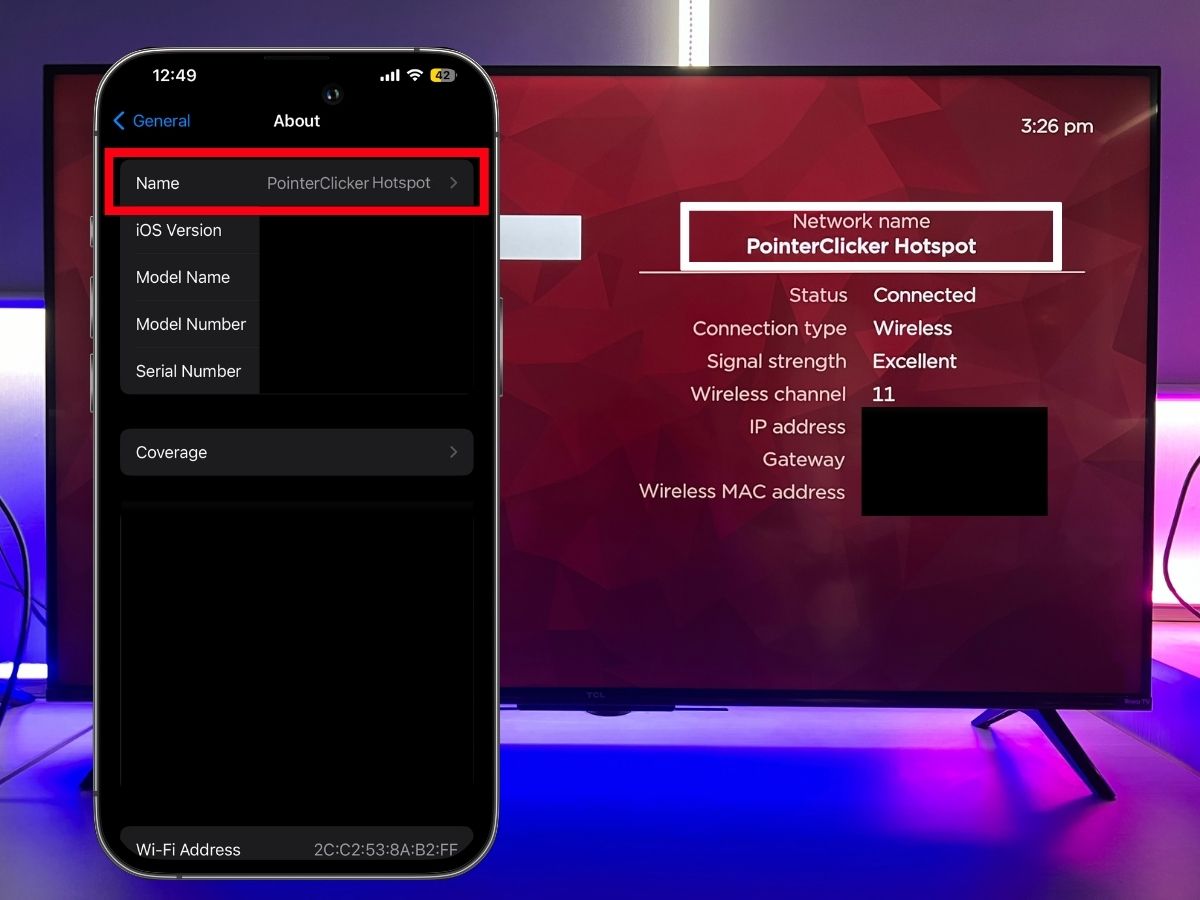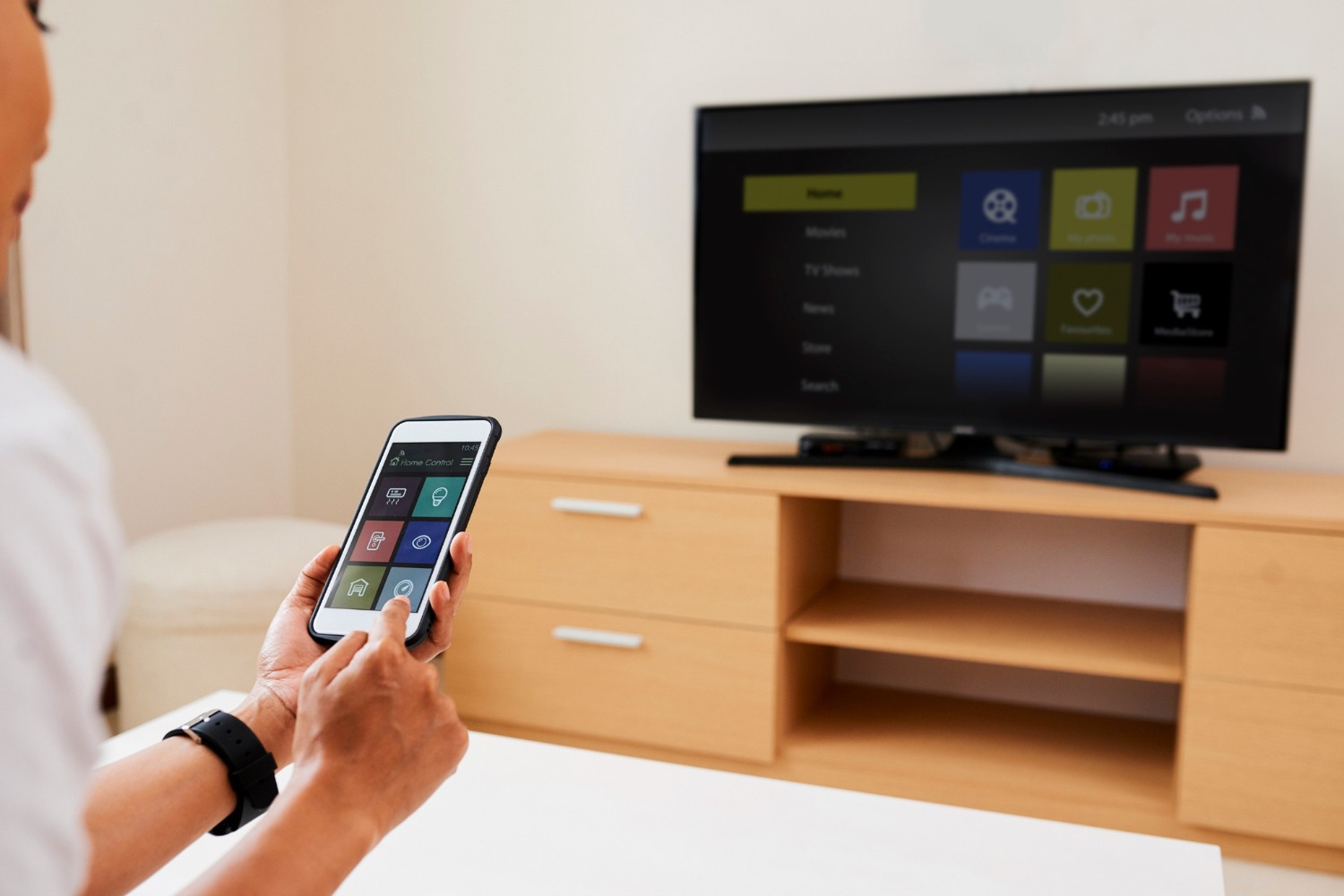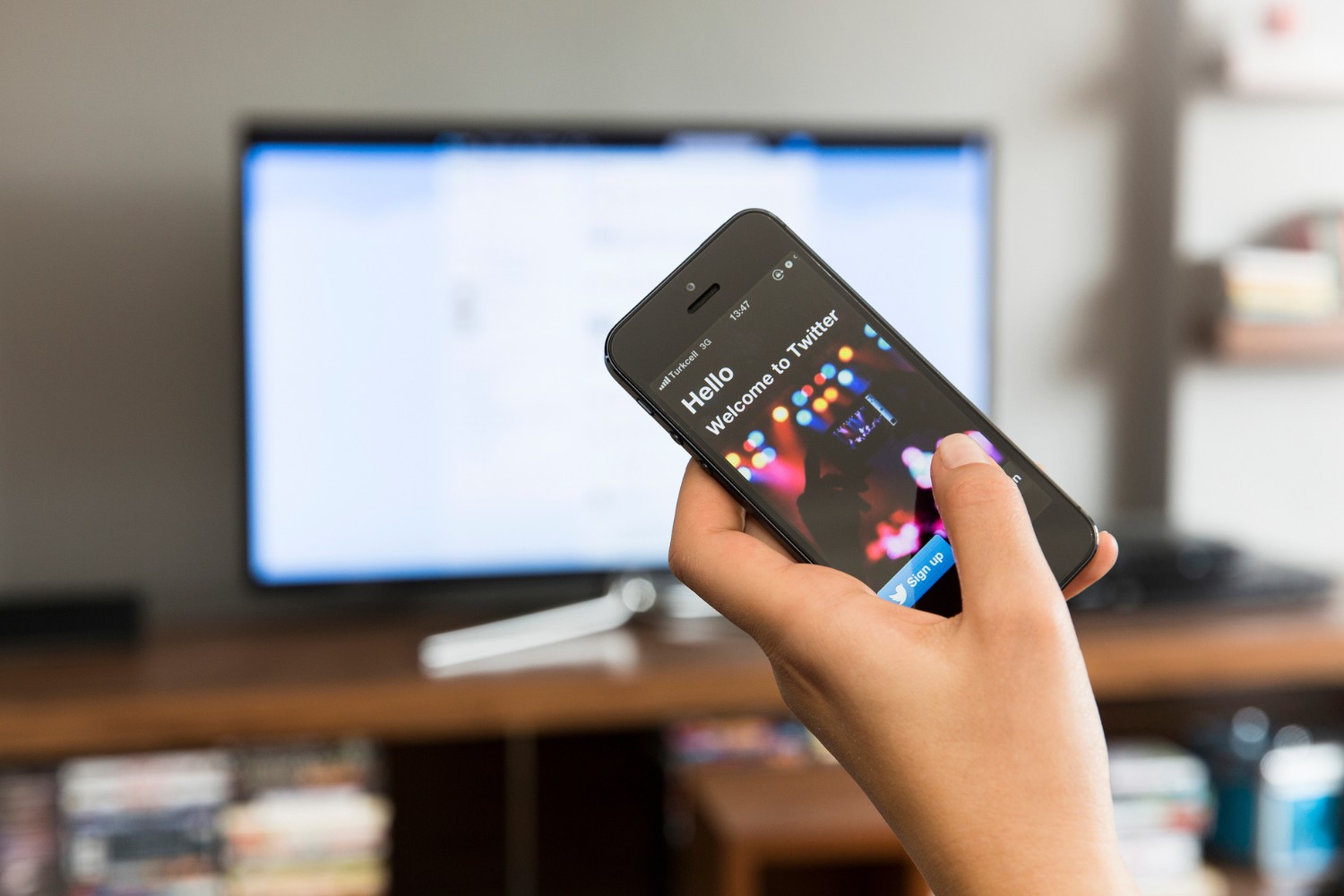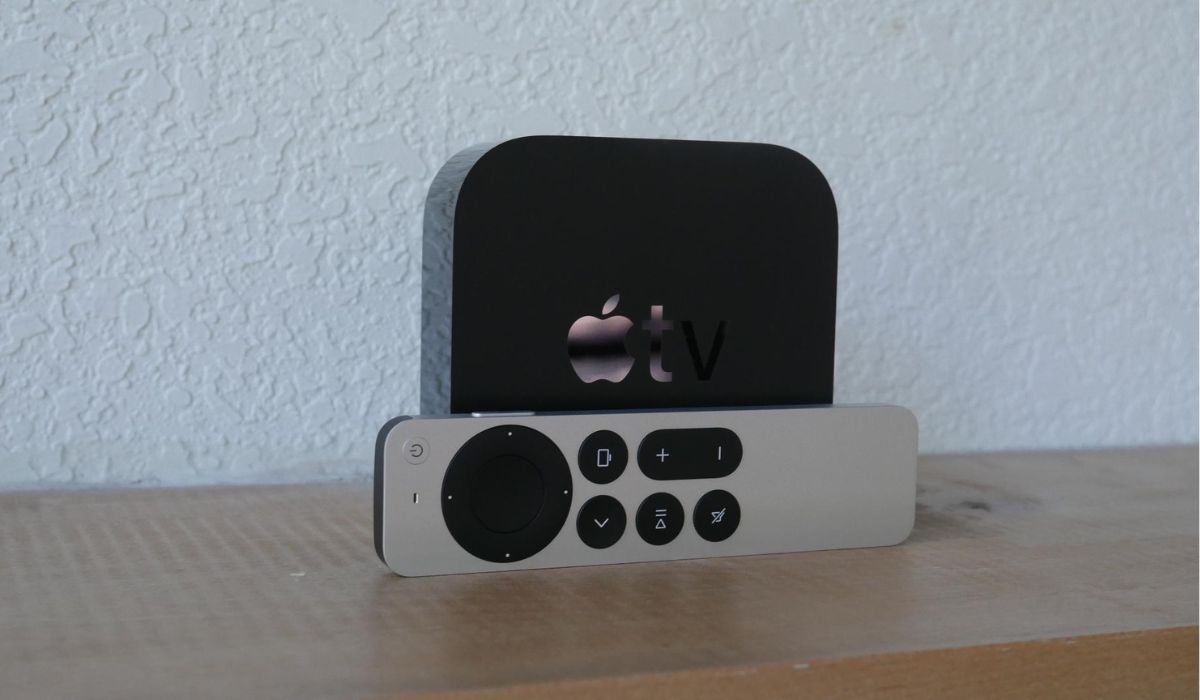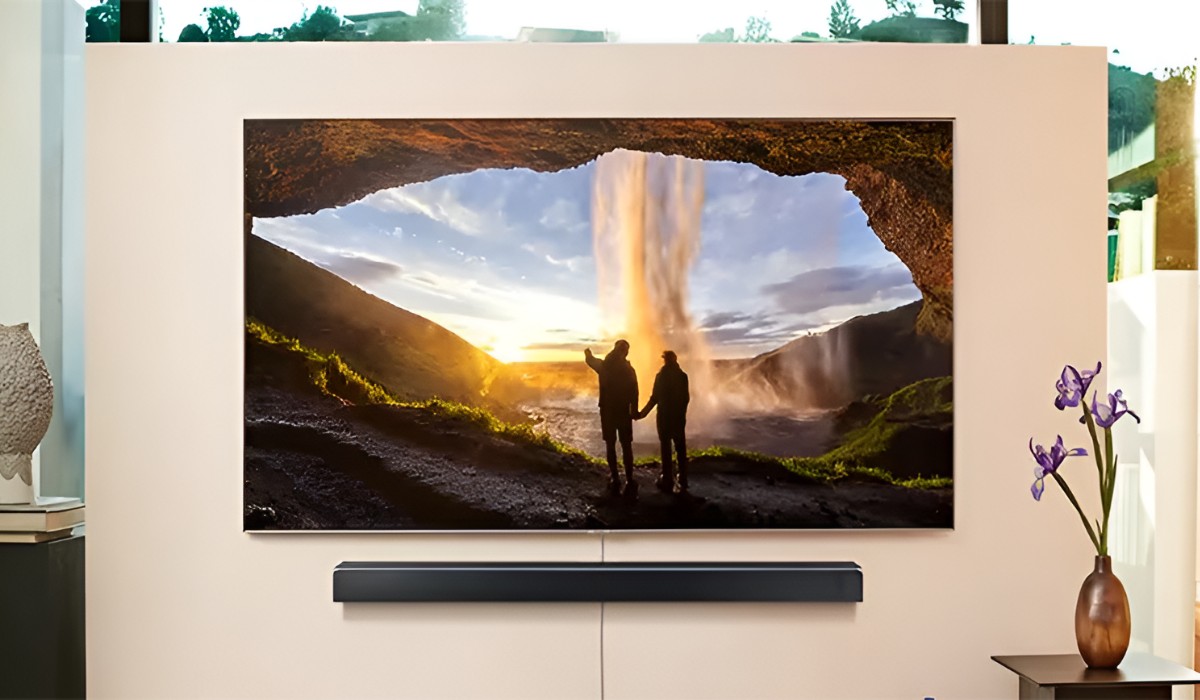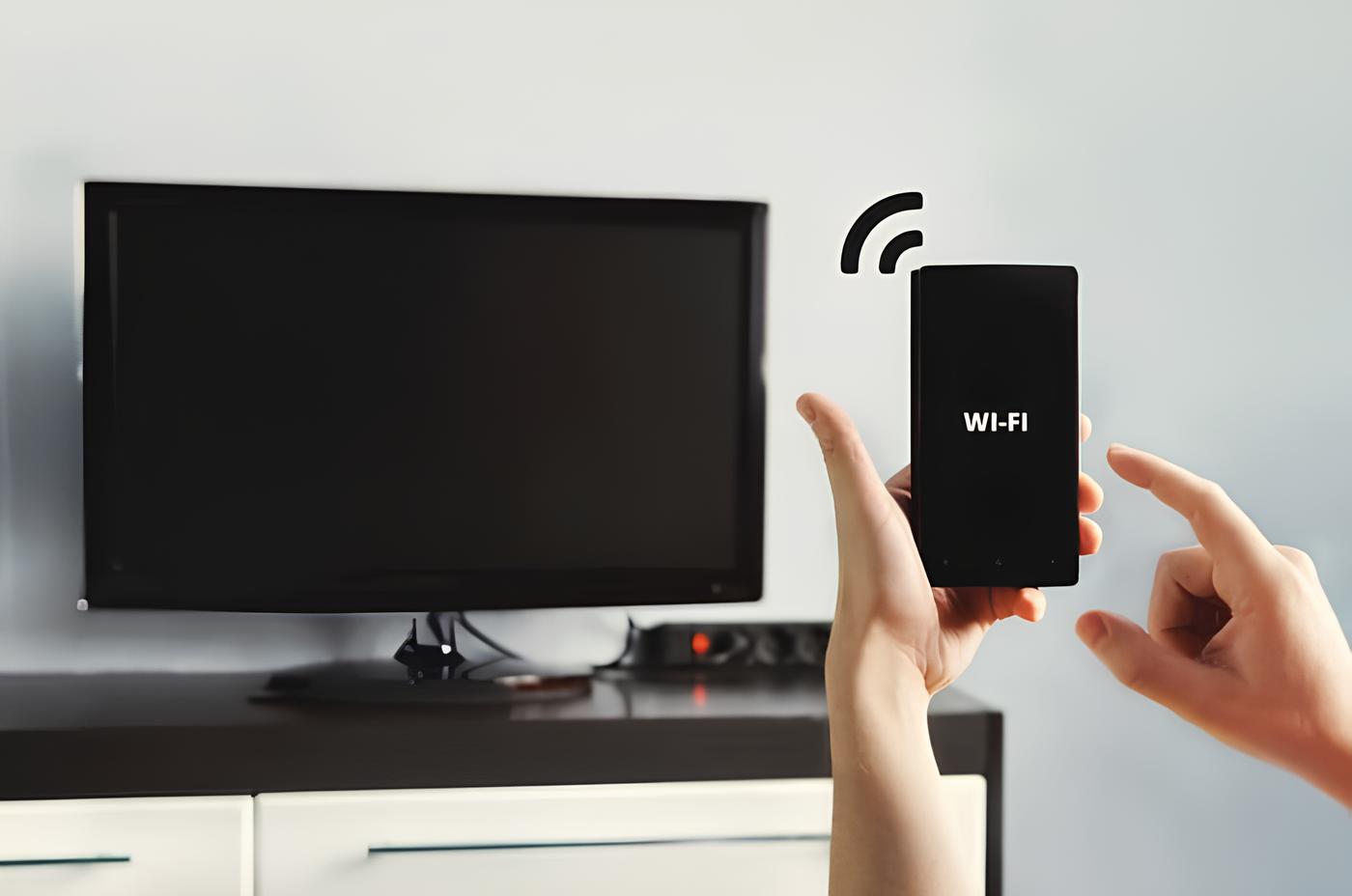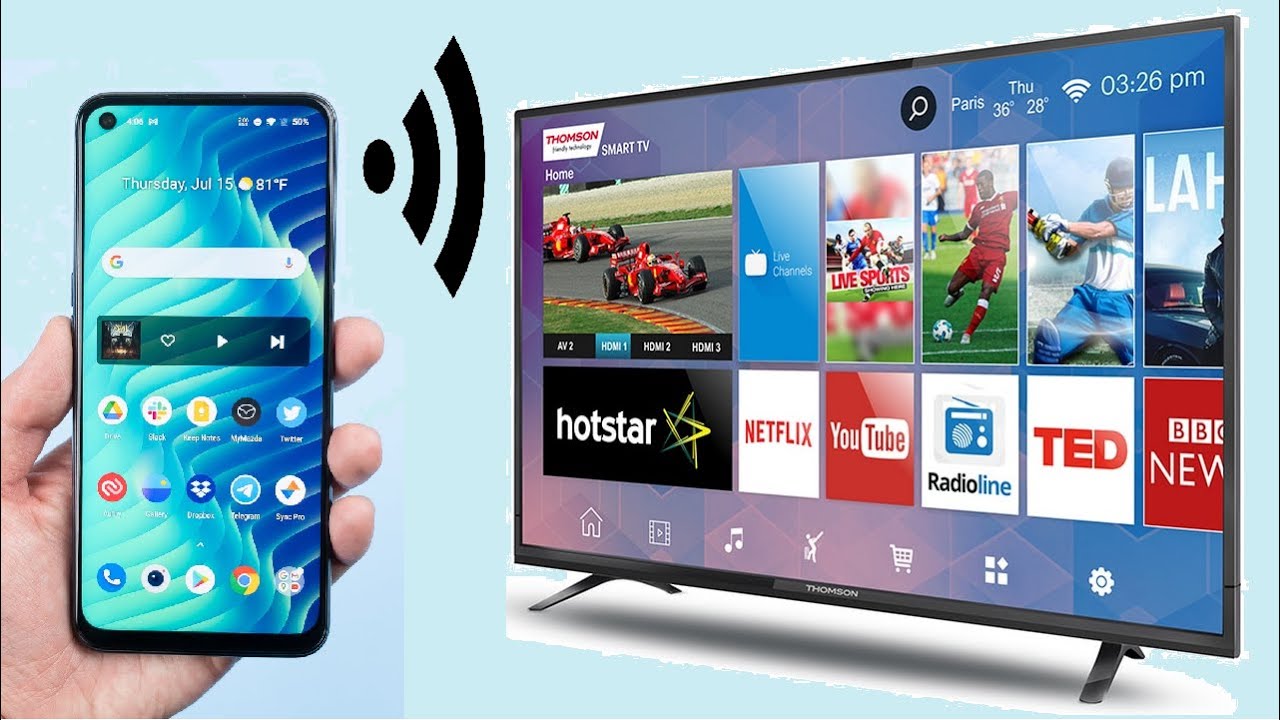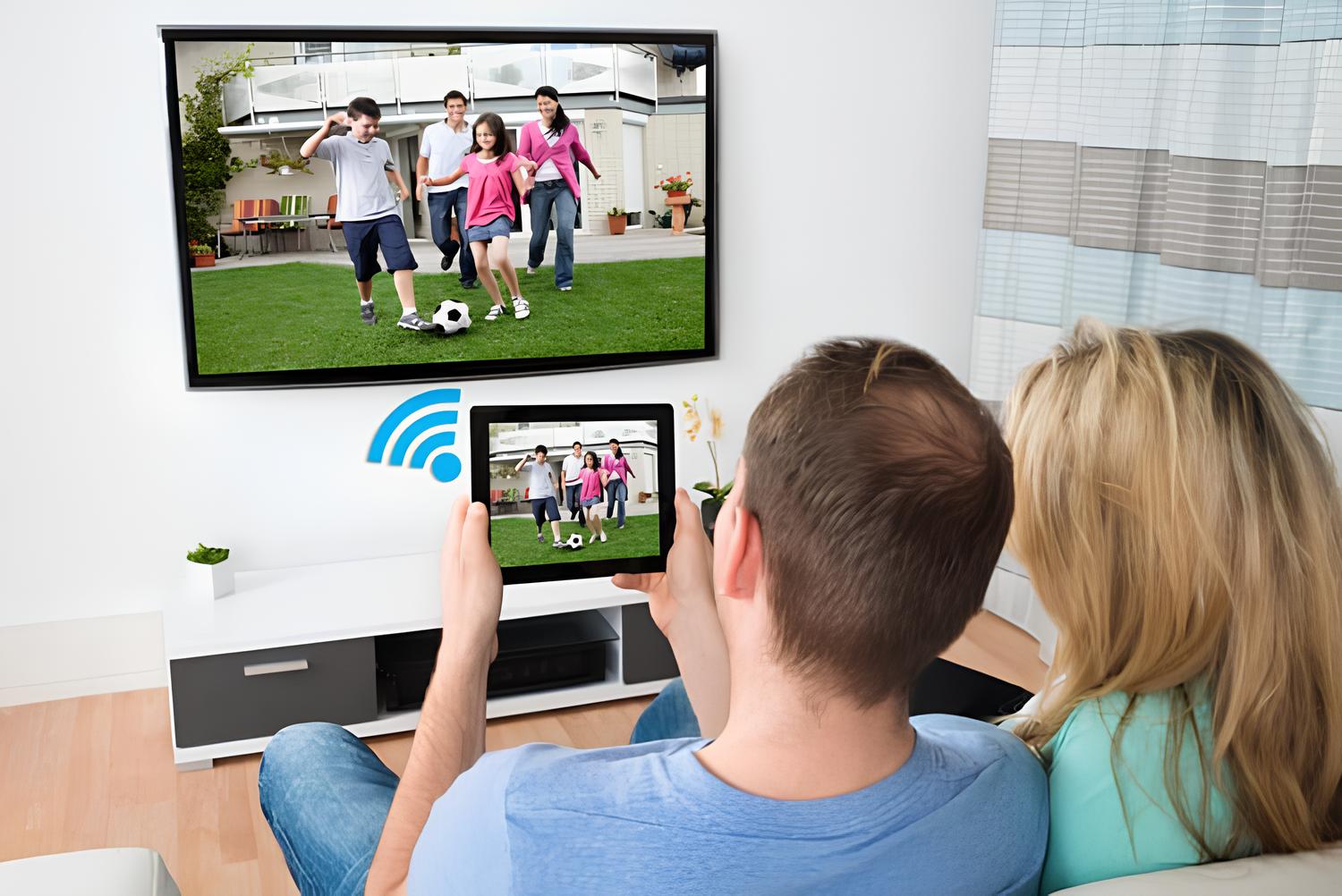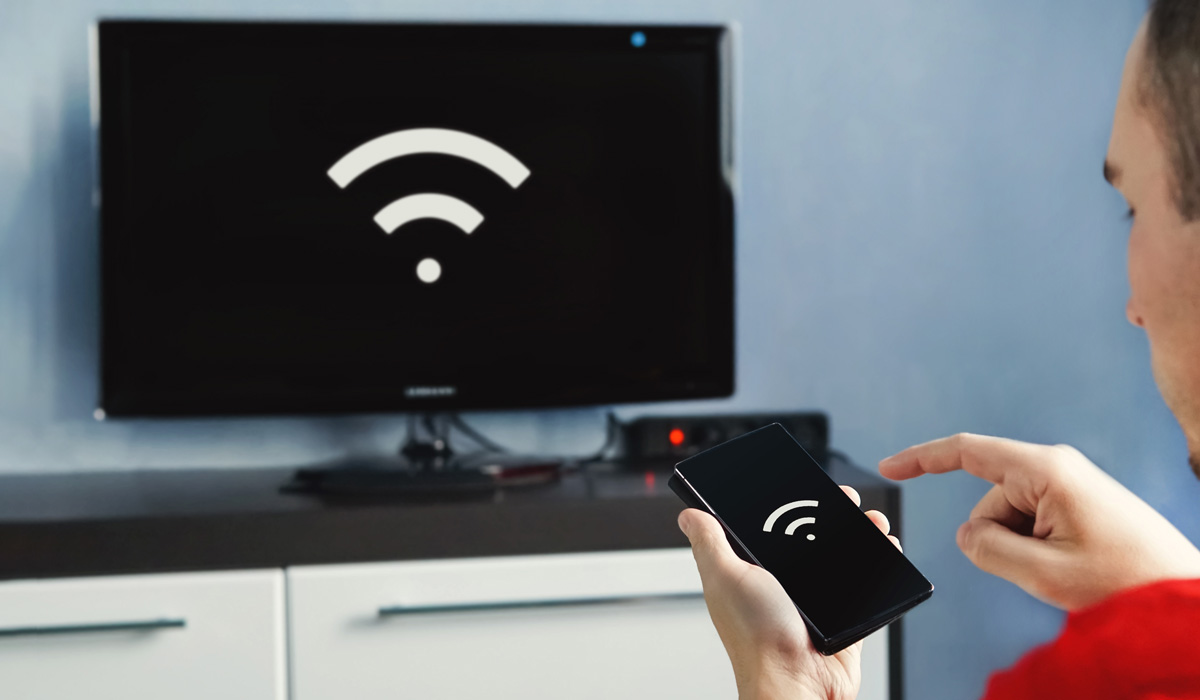Introduction
In today's fast-paced world, staying connected has become a necessity. Whether it's for work, entertainment, or keeping up with the latest news, having a reliable internet connection is crucial. However, there are situations when accessing a traditional Wi-Fi network is not feasible, such as when you're on the go or in a location without a Wi-Fi signal. In such scenarios, using a mobile hotspot can be a game-changer.
A mobile hotspot, created using a smartphone or a portable hotspot device, allows you to share your cellular data connection with other devices, including your television. This means that even if you're in a remote location or experiencing connectivity issues with your regular Wi-Fi network, you can still enjoy streaming your favorite shows, movies, or online content on a larger screen.
In this comprehensive guide, we'll walk you through the step-by-step process of connecting your TV to a mobile hotspot. Whether you're a tech-savvy individual looking to expand your connectivity options or someone facing temporary internet disruptions, this guide will equip you with the knowledge and confidence to set up and troubleshoot your TV connection to a mobile hotspot.
By following the instructions outlined in this guide, you'll be able to harness the power of your mobile hotspot to seamlessly stream content on your TV, ensuring that you never have to miss out on your favorite entertainment, even in challenging connectivity situations. So, let's dive in and explore the simple yet effective steps to connect your TV to a mobile hotspot.
Step 1: Check Your TV's Compatibility
Before embarking on the process of connecting your TV to a mobile hotspot, it's essential to ensure that your television is compatible with this setup. While most modern TVs are equipped to connect to external devices and networks, it's still crucial to verify the compatibility to avoid any potential issues.
-
Wi-Fi Capability: The first aspect to consider is whether your TV has built-in Wi-Fi capability. Many newer models come with this feature, allowing them to connect directly to Wi-Fi networks. If your TV lacks built-in Wi-Fi, you may need additional hardware, such as a Wi-Fi dongle, to enable wireless connectivity.
-
Ethernet Port: If your TV doesn't have built-in Wi-Fi, it may have an Ethernet port for wired internet connections. In such cases, you can use an Ethernet cable to connect your TV to a mobile hotspot device, such as a smartphone or a portable hotspot router. This option provides a reliable connection and is suitable for TVs without wireless capabilities.
-
HDMI and USB Ports: Some TVs offer the option to connect external devices, such as streaming sticks or dongles, through HDMI or USB ports. If your TV lacks native Wi-Fi support, you can explore using these ports to connect a compatible streaming device that can access the internet through the mobile hotspot.
-
Smart TV Compatibility: Smart TVs, equipped with advanced features and built-in apps, are designed to connect to the internet for streaming content. If you have a smart TV, it likely supports wireless connectivity and can easily be linked to a mobile hotspot. Additionally, smart TVs often have compatibility with popular streaming services and apps, enhancing the viewing experience.
-
Check the User Manual: If you're unsure about your TV's connectivity options, referring to the user manual can provide valuable insights. The manual typically contains detailed information about the TV's specifications, including its networking capabilities and supported connection methods.
By thoroughly examining these compatibility factors, you can determine the most suitable approach to connect your TV to a mobile hotspot. Understanding your TV's capabilities ensures a smoother setup process and enables you to make informed decisions regarding any additional hardware or accessories required for the connection. Once you've confirmed your TV's compatibility, you can proceed to the next steps with confidence, knowing that your TV is ready to be linked to a mobile hotspot for seamless connectivity and entertainment access.
Step 2: Set Up Your Mobile Hotspot
Setting up your mobile hotspot is a crucial step in enabling your TV to connect to the internet through your cellular data connection. Whether you're using a smartphone or a dedicated portable hotspot device, the process involves activating the hotspot feature and configuring the necessary settings to establish a stable and secure connection for your TV.
Using a Smartphone as a Hotspot
If you're using a smartphone as your mobile hotspot, the steps may vary slightly based on the device's operating system, but the general process remains consistent across most smartphones.
-
Accessing Hotspot Settings: Begin by accessing the settings menu on your smartphone. Look for the "Hotspot" or "Tethering" option, typically found under the "Network & Internet" or "Connections" section.
-
Enabling the Hotspot: Once in the hotspot settings, you'll have the option to enable the hotspot feature. Upon activation, your smartphone will start broadcasting a Wi-Fi network, allowing other devices, including your TV, to connect to it.
-
Configuring Hotspot Security: It's essential to set up a strong and secure password for your hotspot to prevent unauthorized access. Choose a unique and complex password to safeguard your connection and ensure that only trusted devices can join the hotspot network.
-
Connecting Your TV: With the hotspot active and secured, navigate to your TV's network settings. Look for the available Wi-Fi networks and select your smartphone's hotspot from the list. Enter the password you set earlier, and your TV should establish a connection to the hotspot.
Using a Portable Hotspot Device
If you're using a dedicated portable hotspot device, such as a mobile Wi-Fi router or a hotspot-enabled dongle, the setup process involves activating the device and configuring the network settings.
-
Powering On the Hotspot Device: Start by turning on the portable hotspot device. Depending on the model, you may need to press a power button or activate the device through its accompanying mobile app.
-
Network Configuration: Access the device's settings through a web interface or a dedicated app. Here, you can configure the network name (SSID) and set a secure password for the hotspot, ensuring that your TV can connect to it securely.
-
Connecting Your TV: On your TV, access the network settings and search for available Wi-Fi networks. Locate and select the network broadcasted by your portable hotspot device. Enter the password you set during the configuration, and your TV will establish a connection to the hotspot.
By following these steps, you can effectively set up your mobile hotspot, whether using a smartphone or a dedicated portable hotspot device, to enable seamless connectivity for your TV. Once the hotspot is active and your TV is connected, you'll be ready to enjoy a wide range of online content, from streaming services to web browsing, directly on your television screen.
Step 3: Connect Your TV to the Hotspot
Once your mobile hotspot is set up and active, the next step is to connect your TV to the hotspot network. This process allows your television to access the internet through the cellular data connection provided by the hotspot, enabling you to stream content, browse the web, and enjoy various online services on the larger screen of your TV.
Connecting via Wi-Fi
If your TV has built-in Wi-Fi capability or supports wireless connectivity, you can establish a direct connection to the mobile hotspot's Wi-Fi network. Follow these steps to connect your TV to the hotspot:
-
Accessing Network Settings: Begin by accessing the network settings menu on your TV. This option is typically found in the settings or setup menu, often labeled as "Network," "Wi-Fi," or "Internet Connection."
-
Scanning for Available Networks: Within the network settings, your TV will scan for available Wi-Fi networks. Look for the name of the hotspot network created by your smartphone or portable hotspot device.
-
Connecting to the Hotspot: Select the hotspot network from the list of available networks. If the network is secured with a password, you will be prompted to enter the password to establish the connection.
-
Confirmation: Once the correct password is entered, your TV will attempt to connect to the hotspot network. Upon successful connection, your TV will be linked to the mobile hotspot, granting access to the internet through the cellular data connection.
Connecting via Ethernet (Wired Connection)
If your TV does not support wireless connectivity but has an Ethernet port, you can opt for a wired connection to the mobile hotspot device. Follow these steps to connect your TV to the hotspot using an Ethernet cable:
-
Locating the Ethernet Port: Identify the Ethernet port on your TV and the corresponding port on your portable hotspot device or smartphone (if supported).
-
Connecting the Ethernet Cable: Insert one end of the Ethernet cable into the Ethernet port on your TV and the other end into the Ethernet port on the hotspot device.
-
Network Configuration: Once the physical connection is established, your TV may automatically detect the wired connection. If not, access the network settings on your TV and select the wired connection option, allowing your TV to utilize the internet connection provided by the mobile hotspot.
By following these steps, you can successfully connect your TV to the mobile hotspot, enabling seamless access to online content and services. Whether via wireless or wired connection, establishing this link empowers you to enjoy a wide array of entertainment and information on your TV, regardless of traditional Wi-Fi network availability.
Step 4: Troubleshooting Common Issues
While connecting your TV to a mobile hotspot can open up a world of possibilities for entertainment and online access, it's essential to be prepared for potential challenges that may arise during the setup process. By understanding and addressing common issues, you can ensure a smooth and uninterrupted experience when utilizing your TV's connection to a mobile hotspot.
1. Signal Strength and Stability
One of the primary concerns when using a mobile hotspot is the signal strength and stability, especially in areas with limited cellular coverage. If you experience intermittent connectivity or slow speeds, consider the following steps:
- Reposition the Hotspot: Place the mobile hotspot device or smartphone in a location with better signal reception, such as near a window or in an elevated position.
- Signal Boosters: Explore the option of using signal boosters or amplifiers to enhance the hotspot's signal strength, improving the overall connectivity for your TV.
2. Network Authentication Issues
If you encounter difficulties with network authentication or are unable to establish a connection between your TV and the mobile hotspot, try the following troubleshooting measures:
- Verify Password Accuracy: Double-check the password entered on your TV when attempting to connect to the hotspot. Ensure that the password is entered correctly, including uppercase and lowercase characters, to avoid authentication errors.
- Hotspot Security Settings: Review the security settings on your mobile hotspot device or smartphone to confirm that the authentication method (WPA2, WEP, etc.) is compatible with your TV's network capabilities.
3. Firmware Updates and Compatibility
In some cases, outdated firmware on your TV or the mobile hotspot device can lead to compatibility issues. To address this:
- Update TV Firmware: Check for available firmware updates for your TV model and install any pending updates to ensure optimal compatibility with the mobile hotspot connection.
- Hotspot Device Updates: Similarly, if using a portable hotspot device, ensure that the device's firmware is up to date by following the manufacturer's recommended update process.
4. Overcoming Bandwidth Limitations
When using a mobile hotspot, bandwidth limitations may impact the streaming quality or overall internet access on your TV. To mitigate this issue:
- Data Management: Monitor your data usage and prioritize essential TV activities to avoid exceeding data limits. Consider adjusting streaming quality settings on streaming apps to conserve bandwidth without compromising viewing experience.
5. Interference and Network Congestion
In densely populated areas or locations with numerous Wi-Fi networks, network interference and congestion can affect the performance of your mobile hotspot. Consider the following steps:
- Channel Selection: Access the hotspot device settings to manually select a less congested Wi-Fi channel, minimizing interference from neighboring networks.
- Time-Based Usage: Schedule TV usage during off-peak hours to reduce the impact of network congestion and ensure a smoother streaming experience.
By proactively addressing these common issues and implementing the suggested troubleshooting strategies, you can optimize your TV's connection to the mobile hotspot, ensuring a reliable and enjoyable online experience. Whether it's streaming your favorite shows or staying connected to the digital world, overcoming these challenges will empower you to make the most of your TV's connectivity options.
Conclusion
In conclusion, the ability to connect your TV to a mobile hotspot opens up a world of flexibility and convenience, allowing you to enjoy seamless access to online content regardless of traditional Wi-Fi network availability. By following the step-by-step guide outlined in this comprehensive resource, you've gained valuable insights into the process of setting up and troubleshooting your TV's connection to a mobile hotspot.
By ensuring your TV's compatibility, setting up the mobile hotspot, and establishing the connection, you've empowered yourself to overcome connectivity challenges and enjoy uninterrupted access to a wide array of entertainment and information on your television screen. Whether you're using a smartphone's hotspot feature or a dedicated portable hotspot device, the ability to harness the power of cellular data connectivity for your TV represents a significant advancement in staying connected in diverse environments.
Furthermore, the troubleshooting tips provided offer practical solutions to common issues that may arise during the setup and usage of your TV's connection to the mobile hotspot. By addressing concerns related to signal strength, network authentication, firmware updates, bandwidth limitations, and network congestion, you can ensure a reliable and optimized viewing experience, enhancing your overall satisfaction with the mobile hotspot setup.
As technology continues to evolve, the reliance on mobile connectivity for various devices, including TVs, is expected to grow. The ability to seamlessly integrate your TV with a mobile hotspot not only enhances your entertainment options but also reflects the adaptability and versatility of modern connectivity solutions.
Ultimately, the knowledge and skills acquired from this guide empower you to stay connected, informed, and entertained, regardless of your location or the availability of traditional Wi-Fi networks. By leveraging your TV's connection to a mobile hotspot, you're positioned to make the most of your viewing experience, ensuring that you never miss out on your favorite shows, movies, or online content, even in challenging connectivity situations.
With the insights gained from this guide, you're well-equipped to navigate the process of connecting your TV to a mobile hotspot with confidence and ease, unlocking the full potential of your television's connectivity capabilities. Embrace the freedom and convenience that comes with a reliable TV connection to a mobile hotspot, and enjoy the boundless possibilities of online entertainment at your fingertips.







